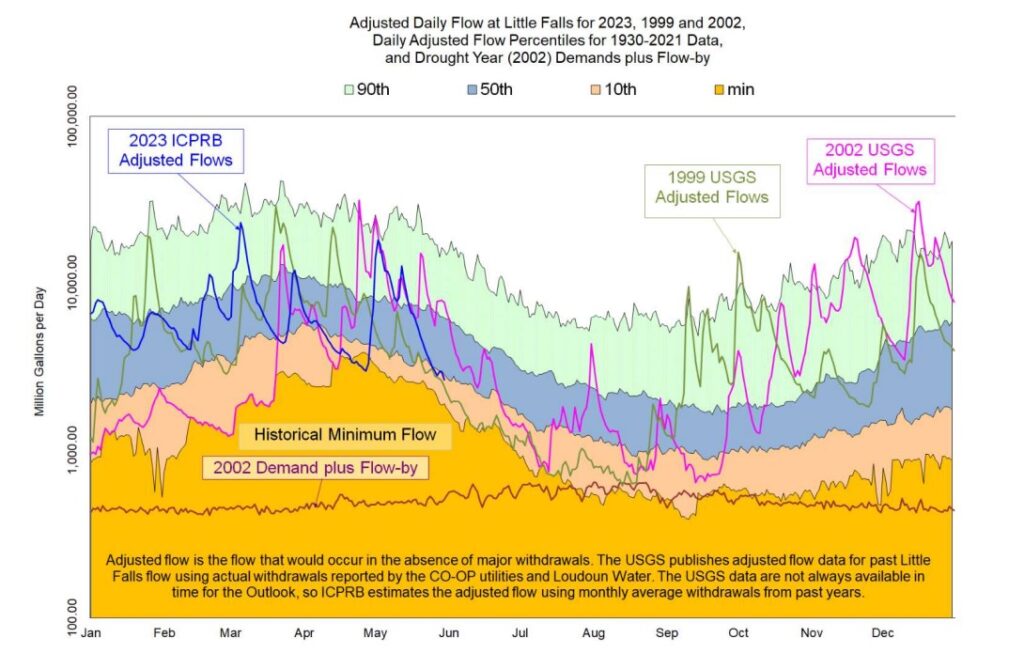Click here to see the full Potomac News Reservoir – May 11, 2023
Water Supply Outlook
The monthly Water Supply Outlook explores the possibility of water supply releases from the area’s reservoirs based on long-term precipitation data, flows, and other information for the Potomac basin.
The Outlook for May reports that low groundwater levels and the recent lack of spring rain have increased the likelihood of water being released from backup reservoirs in the Washington metropolitan area during the dry seasons. Despite receiving some rainfall at the end of April, the cumulative precipitation in the basin over the last 12 months remains below normal.
Currently, the Potomac River flow is sufficient to meet water demands without upstream reservoir releases. However, a prolonged dry spell could lead to hydrological drought. In the case of a drought, the region has contingency plans in place to manage water supply shortages.
Learn more in the May Water Supply Outlook >>>
Funding and Assistance for Small Water Utilities
Earlier this week, small water systems from the western part of the Potomac basin joined us in Romney, W.V., to learn about funding options, updated regulations, emergency preparedness, and more tools to protect our sources of drinking water.
Speakers from the U.S. Environmental Protection Agency, West Virginia Department of Health and Human Resources, West Virginia Rural Water Association shared their resources with the group. The event was organized by the members of the Potomac River Basin Drinking Water Source Protection Partnership, a coalition of government agencies and water utilities that work together on source water protection issues.
In Celebration of Teacher Appreciation Week
We know teachers inspire the next generation of scientists. To assist them in this important work, ICPRB provides a variety of resources for formal and non-formal educators, including bilingual lesson plans that address a variety of curriculum requirements and the Environmental Resource Directory which links to organizations that can provide field experiences, professional development, funding, and more.
Explore our Educator Resources >>>







